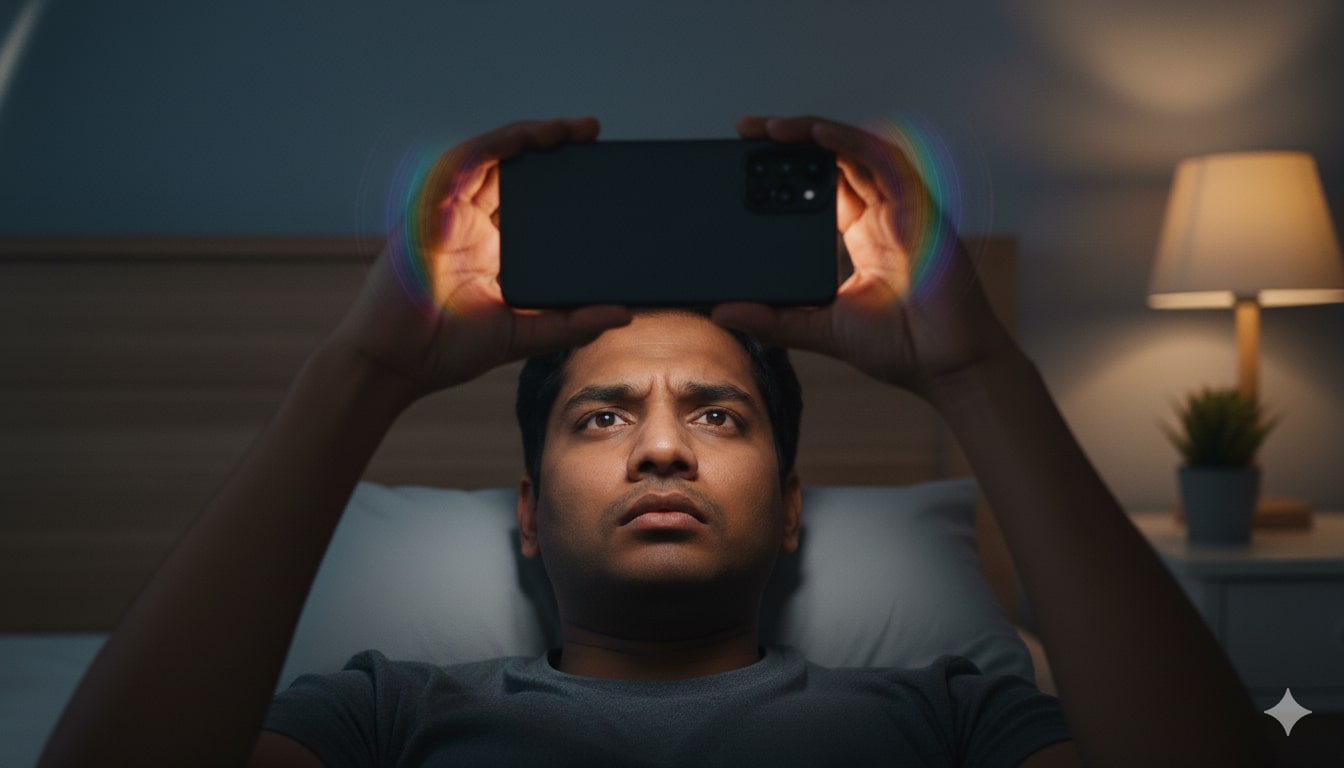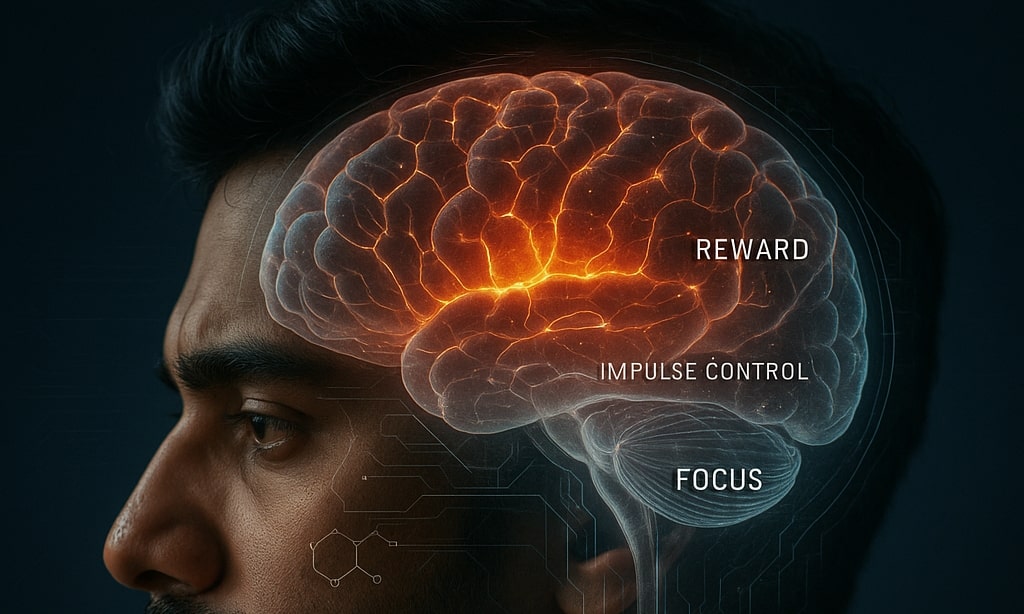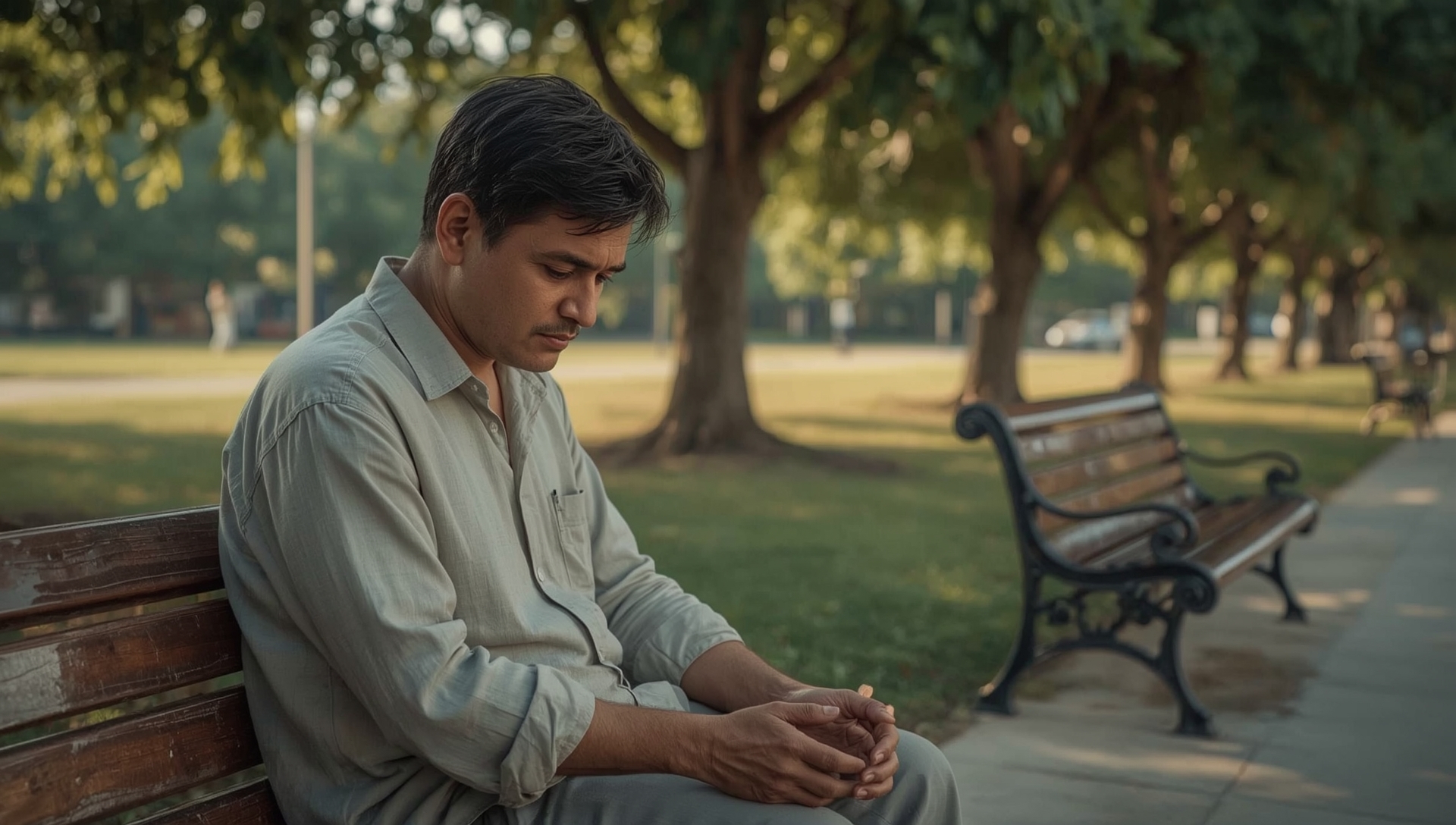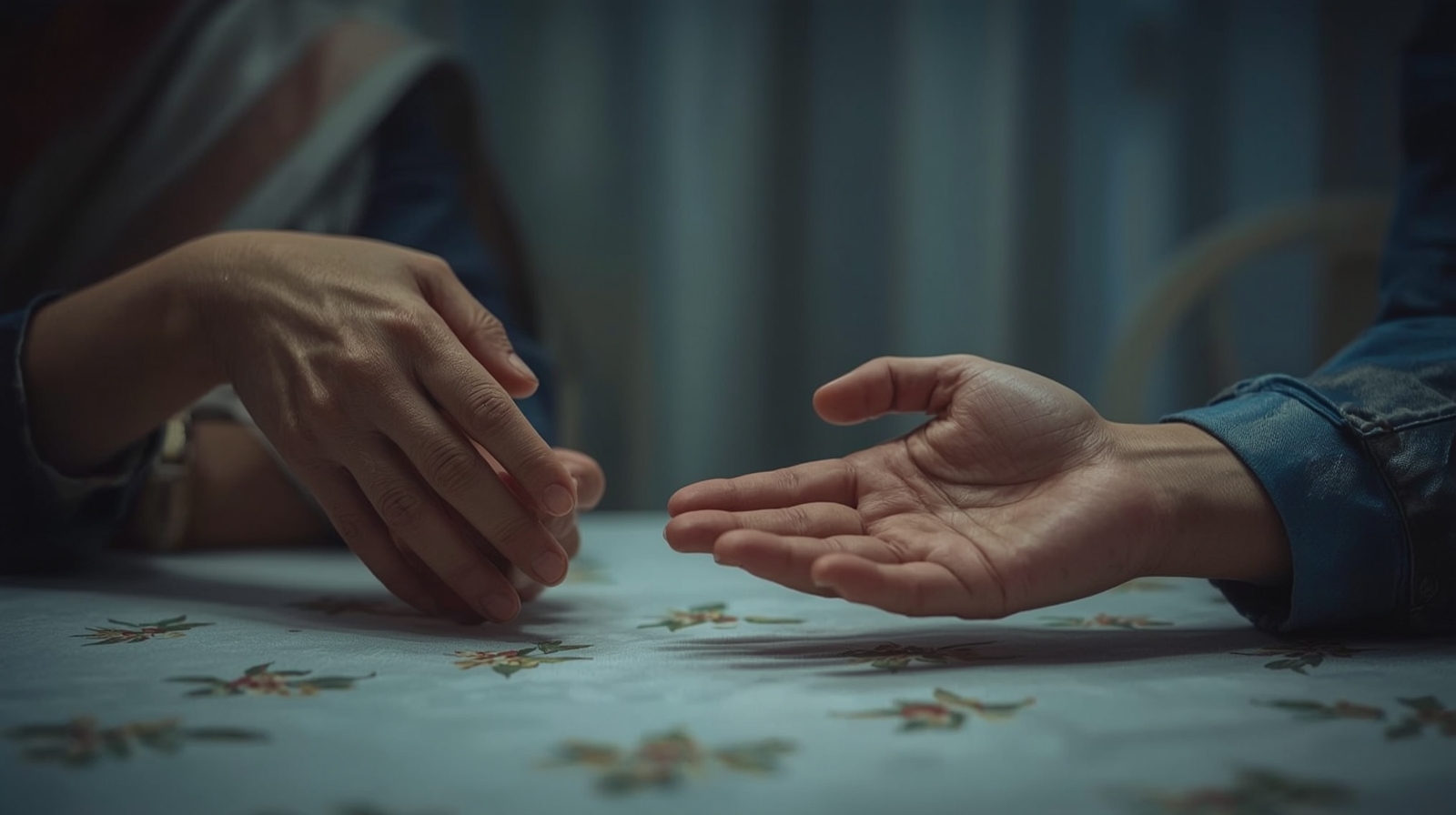
Amaha / / / Understanding Porn Addiction Recovery & Its Side Effects on Lives, Relationships and Mental Health
ARTICLE | 5 MINS READ
Understanding Porn Addiction Recovery & Its Side Effects on Lives, Relationships and Mental Health
Published on
9th Oct 2025

Dr Soumya Parameshwaran
MD Psychiatry

India ranks 3rd globally in pornography consumption? ~64% of Indian men aged 18-35 admit to consuming adult content regularly, according to a 2023 survey. Yet the conversation around porn addiction effects remains hushed, buried under layers of shame and cultural silence.
But silence doesn't solve problems. It deepens them.
Porn addiction recovery is not just about quitting a habit. It's about reclaiming your relationships, your mental peace, and your sense of self. Let me walk you through what's really happening behind closed doors (and screens) across Indian households and why this topic demands both empathy and clarity.

Flat 15% Off on First 3 Sessions - Limited Offer
Therapy works best when it’s approached with consistency. Take those first few steps with confidence, so you can begin your mental health journey.
What Exactly Is Pornography Addiction?
Dr Aditya Mahendru, a leading psychiatrist from Amaha, Mumbai, puts it simply: "Pornography addiction is characterised by compulsive consumption despite negative consequences. It's when the screen becomes more compelling than real intimacy, and the individual loses control over their viewing habits."
When someone’s use of porn becomes compulsive, cannot be controlled, and starts to cause distress or dysfunction, it is called porn addiction. It’s often considered a behavioural addiction (not a substance addiction) akin to gambling, social media or gaming addiction.
That said, “porn addiction” is still debated in formal psychiatric typologies: some prefer terms like compulsive sexual behaviour, hypersexuality or dysregulated porn use.
The Neuroscience Behind Porn Addiction: What's Actually Happening in Your Brain
When you watch pornography, your brain releases dopamine (the pleasure chemical) in massive amounts. Over time, regular exposure creates a tolerance. You need more, or different, or increasingly extreme content to achieve the same high.
Neural pathways get rewired: the frontal lobes (for self-control, decision-making) get weaker in resisting impulses. Emotional circuits around shame or anxiety strengthen. Some call pornography a “supernormal stimulus,” hijacking your brain’s reward systems. Studies are emerging that excessive porn use correlates with erectile dysfunction, decreased sexual responsiveness, and distorted expectations.
Here's what makes it particularly tricky: unlike alcohol or drugs, pornography is free, private, and accessible 24/7. A man in Bangalore doesn't need to visit a shady location. He just needs a smartphone and a locked bathroom.

Signs and Symptoms of Porn Addiction: When does it become a problem?
1. Escalating consumption: What started as 20 minutes weekly consumes hours daily.
2. Failed attempts to stop: You've deleted apps, blocked websites, made promises to yourself or your partner, but keep returning. The guilt afterwards is crushing, yet you repeat the cycle.
3. Neglecting responsibilities: Projects at work suffer. You're sleeping less. Family time feels like an interruption to your viewing schedule. It interferes with work, study, and social life.
4. Relationship deterioration: Your partner notices you're distant. Intimacy becomes mechanical or non-existent. Some men develop erectile dysfunction with real partners whilst still responding to pornography.
5. Emotional numbness: Beyond the obvious sexual content, you're feeling less joy in normal activities.
6. Increased craving for extreme genres: You escalate to more extreme genres for increased stimulation to feel satisfied. Craving increases so much that you lie or make excuses to be alone and watch porn.
I once spoke with Rajesh (name changed), a 32-year-old software engineer from Pune. He said, "I thought I was managing it fine. Then my wife found my browsing history, and I saw the hurt in her eyes. That's when I knew I'd crossed a line I couldn't uncross on my own."
Reasons and Causes: Why Does Porn Addiction Develop?
Stress and escapism: The pressure of daily life struggles drives many Indian men (and increasingly women) towards easy escapes. Pornography offers instant relief without the complexities of real connection.
Early exposure: Many Indians first encounter pornography during adolescence, often through peer groups or accidentally. The brain during puberty is particularly susceptible to forming strong neural pathways around sexual stimuli.
Relationship dissatisfaction: In arranged marriages where emotional intimacy develops slowly (if at all), pornography fills the gap. It's simpler than addressing communication problems with your spouse.
Curiosity and normalisation: With widespread internet penetration, pornography has become normalised. Friends joke about it. Pop culture references it. The boundary between "normal viewing" and addiction blurs.
Lack of sexual education: In India many grow up without honest talk about sex, so porn fills gaps. (A Reddit comment sums it: “Porn becomes first time most individuals learn about sex.”)
Underlying mental health issues: Depression, anxiety, ADHD, or past trauma often coexist with porn addiction. The content becomes self-medication for deeper psychological wounds.

Flat 15% Off on 3 Sessions - Need Psychologist Support to Stop your Porn Addiction Fast?
Amaha Therapists have 8+ years of Experience in handling Porn Addiction Recovery & Sexual Health problems in Clients
Side Effects and Negative Consequences of Porn Addiction
The negative effects of porn addiction extend far beyond your bedroom. They seep into every corner of your life.
Physical effects:
- Erectile dysfunction
- Delayed ejaculation
- Reduced libido for real partners
- Disrupted sleep patterns, and
- Chronic fatigue.
- Some men develop carpal tunnel syndrome or eye strain from excessive device use.
Cognitive effects:
- Concentration difficulties
- Memory problems
- Decreased productivity, and
- Distorted perceptions of sexuality and relationships.
- Decline in motivation, procrastination
- Obsession with novelty or extreme content
Emotional effects:
- Increased shame, guilt,
- Persistent depression, mood swings, irritability, and emotional numbness.

Relationship & intimacy
- Loss of trust (especially when partner discovers the habit)
- Emotional distance or sexual dissatisfaction
- Jealousy, resentment, breakups
- Many Indian couples report the husband or wife preferring online porn over real intimacy.
Social effects:
- Isolation from friends and family, decreased interest in social activities, difficulty forming real romantic connections, and sometimes job loss due to viewing at work or decreased performance.
Financial effects:
- Though content is often free, the time lost has economic costs. Reduced productivity, missed promotions, or in severe cases, job termination.
Spiritual effects:
- For many Indians, religious or spiritual disconnect occurs. You feel hypocritical performing pujas or attending temple whilst hiding this secret. The internal conflict drains you.
The Mental Health Impact of Porn Addiction: Beyond the Physical
Unlike alcoholism where physical symptoms are visible, this addiction operates in shadows.
Depression sets in first. The shame after each viewing session compounds. You start believing you're broken, disgusting, unworthy of real love. These thoughts become intrusive, appearing during office meetings or family dinners.
Anxiety follows. Will someone discover your secret? Can you perform with a real partner? The constant vigilance exhausts you mentally.
Social isolation creeps in gradually. You cancel plans with friends because you'd rather be alone with your screen.
Many men develop what psychologists call "pornography-induced erectile dysfunction." Their bodies stop responding to real partners because their brains have been conditioned to specific digital stimuli. The embarrassment from this creates a vicious cycle. Performance anxiety leads to more pornography consumption, which worsens the physiological issue.
For women struggling with porn addiction (yes, it affects women too, despite the stereotypes), the shame feels doubled. Indian society barely acknowledges female sexuality, let alone female pornography consumption. These women suffer in complete isolation.

How Porn Addiction Affects Your Relationship, Partner, and Marriage
Your partner, whether girlfriend or wife, usually senses something's wrong before they have proof. Maybe you're less present during conversations. Perhaps physical intimacy has become infrequent or feels performative. They might blame themselves, wondering if they're not attractive enough, interesting enough, enough.
For many Indian women raised with traditional values, discovering a husband's porn addiction feels like infidelity. "Am I not enough?" becomes the recurring question, echoing through the marriage. Communication breaks down. You're defensive because of shame. She's hurt and angry. Trust cracks, partners feel betrayed.
Children sense the tension even if they don't understand it. Homes become emotionally cold. Festivals feel obligatory rather than joyful.
I've heard from wives who've stopped initiating any physical contact because rejection hurts too much. I've counselled husbands who genuinely love their wives but can't explain why pixels on a screen feel more compelling than the woman sleeping beside them.
How to stop & overcome porn addiction - How to Start Porn Addiction Recovery Fast
You can. Yes, you can. Recovery is messy yet possible. Here’s how to start:
- Acknowledge: Accept this is not just a bad habit; it has become harmful.
- Track patterns and urges: When, why, where do you relapse? Identify trigger points which lead you to watching porn - Is it boredom? Stress? Loneliness? Awareness turns vague guilt into a pattern you can manage
- Tell someone. The shame thrives in secrecy. When you verbalise your struggle to another person (a trusted friend, family member, or therapist), you've already begun dismantling addiction's power.
- Delete your stash and clear your history Clean your digital space. Deleting downloaded videos, bookmarks, and browsing history breaks the visual memory loops that feed porn addiction effects.
- Create friction: Use website blockers; delete apps; change device habits.
- Replace the habit, not just remove it: Porn addiction leaves an emotional vacuum. Fill it with something physical (workouts), mindful (meditation), or social (calling a friend). The goal isn’t to “stay busy,” but to redirect your dopamine
- Seek professional help. Many Indian therapists now offer online sessions, which provides privacy if you're worried about being seen entering a clinic.
- Gradual abstinence or reduction: Aim initially for small windows (say 24 hours), then expand.
- Use the 10-minute rule: When the urge comes, tell yourself you’ll wait 10 minutes. Cravings peak and fade fast; delay is a powerful recovery tool.
- Accountability partner: Someone (friend) you trust.
- Create structure. Idle time feeds addiction. Structure your day. Wake and sleep at consistent times. Schedule activities. Fill the spaces where addiction used to live.
- Rebuild your relationship with real intimacy: Avoid unrealistic expectations shaped by porn. Relearn closeness; through honest communication, touch, and emotional connection with your partner or spouse.
- Reward yourself for progress: Track streaks- 1 day, 3 days, 7 days. Reward milestones (with a movie, meal, or treat). Celebrating small wins rewires your brain positively.
- Reframe porn addiction as a learning process: Instead of seeing yourself as “broken,” see this as your brain trying to cope. You’re not weak — you’re rewiring. Every day clean is a victory for your mental health and self-control.
Porn Addiction Recovery: Long Term Steps for Recovery
Long-term strategies:
Address underlying issues. Why did this addiction develop? Are you avoiding difficult emotions? Is your work unfulfilling? Do you have unresolved trauma? Therapy helps unpack these deeper questions.
Build a meaningful life. Addiction fills a void. What positive things can fill that void instead? Purpose, connection, growth, these are addiction's enemies.
Stay connected to support systems. Whether that's a therapist, support group, or trusted friend, maintaining accountability helps sustain recovery even after initial progress.
Management & Treatment: Yes, Porn Addiction Recovery Is Possible
Here's the thing about porn addiction recovery: it's entirely possible, but it requires genuine commitment and usually professional help.
Therapy approaches that work:
Cognitive Behavioural Therapy (CBT) helps identify triggers and develop healthier coping mechanisms. When work stress hits, instead of turning to pornography, you learn alternative responses.
Acceptance and Commitment Therapy (ACT) teaches you to acknowledge urges without acting on them. The urge to view pornography might arise, but you don't have to obey it. You can watch the thought pass like a cloud across the sky.
Couple's therapy addresses relationship damage and rebuilds intimacy. Both partners learn to communicate about difficult topics without judgment. This becomes crucial because porn addiction recovery affects both people in the relationship.
Psychiatrist's role if and when needed:
Sometimes medications help, particularly if underlying depression or anxiety exists. SSRIs (antidepressants) can reduce compulsive behaviours whilst you work on the psychological aspects. A psychiatrist evaluates whether chemical imbalances are contributing to the addiction.
Signs that recovery is progressing
- Urges weaken or become manageable
- Fewer crashes into shame
- Intimacy improves with partner
- Better control on consumption decisions
- You reclaim time and mental energy

Finding Help: Porn Addiction Counselling Near Me Online
Porn addiction counselling near me / online in India is quite possible. You don’t need to travel far. Many professionals now offer online counselling in India (via Zoom, phone). Cities such as Mumbai, Delhi, Bengaluru, Pune, Kolkata have specialist psychiatrists and sex therapists.
Search terms like “porn addiction counselling near me” or “sexual behaviour disorder therapy India” will help. Also, check with tele-mental health platforms like Amaha who have expertise in handling such cases.
Moving Forward: Life After Addiction
Porn addiction recovery transforms lives. Men and women who've walked this path report deeper relationships, better mental health, increased productivity, and genuine self-respect.
The effects of porn addiction felt permanent whilst you were trapped. But neuroplasticity (your brain's ability to rewire itself) means change is always possible. Those neural pathways that led you toward compulsive viewing can be redirected toward healthier patterns.
Recovery takes time. Most therapists suggest meaningful progress requires 6-12 months of consistent effort. Some people achieve stability sooner. Others need longer. Your timeline is your own.
The Indian cultural context adds complexity (shame, stigma, limited open discussion) but also provides strength. Family values, spiritual traditions, and community bonds can become powerful recovery resources once you let people in.
Frequently Asked Questions about Porn Addiction Recovery
Can porn addiction cause permanent erectile dysfunction?
Usually not permanent. Pornography-induced erectile dysfunction typically reverses within 2-6 months of abstinence as the brain resets its arousal patterns. However, recovery time varies individually, and therapy accelerates the process significantly.
Is watching porn once a week considered an addiction?
Frequency alone doesn't determine addiction. If weekly viewing causes guilt, relationship problems, failed quit attempts, or escalating content needs despite negative consequences, it may indicate addiction. Otherwise, it's likely for recreational use.
How long does porn addiction withdrawal last?
Most people experience peak withdrawal symptoms (mood swings, irritability, strong cravings) for 2-4 weeks. Milder symptoms can persist for 2-3 months. Brain rebalancing typically takes 90+ days of abstinence.
Can married couples recover from porn addiction together?
Absolutely. Many marriages strengthen through recovery when both partners commit to therapy, open communication, and rebuilding intimacy. Couple's counselling alongside individual therapy produces the best outcomes for relationship healing.
Does NoFap really work for porn addiction?
NoFap (abstaining from pornography and masturbation) helps some people reset their dopamine systems and break compulsive patterns. However, it works best combined with therapy addressing underlying issues. Solo abstinence without professional support has lower long-term success rates.
Is porn addiction officially recognised in DSM-5?
No. DSM-5 doesn’t list “porn addiction.” Many clinicians use terms like “compulsive sexual behaviour” or “sexual addiction.
Is porn addiction more in men or women?
Men report higher rates, but women are increasingly affected. In India 10.9% of men vs 5.6% of women acknowledged use in one survey
Was This Article Helpful?
Yes
No



Build a good life for yourself
with Amaha
Best App
for Good
on Google Play India

Amaha is equipped to provide care and support for individuals experiencing severe psychological distress, including complex psychiatric disorders and other complex conditions. For those in need of more intensive care and daily support, we are launching an in-patient care facility in Bengaluru soon.
If you or someone you know is experiencing at-risk behaviors or safety concerns, or any other life-threatening crisis or critical mental health situation, contact a helpline or go to the nearest hospital or emergency room. Having a close family member or friend with you for support can be invaluable during this time.
For emergency mental health support, please call the national Tele MANAS helpline at 1-800 891 4416.